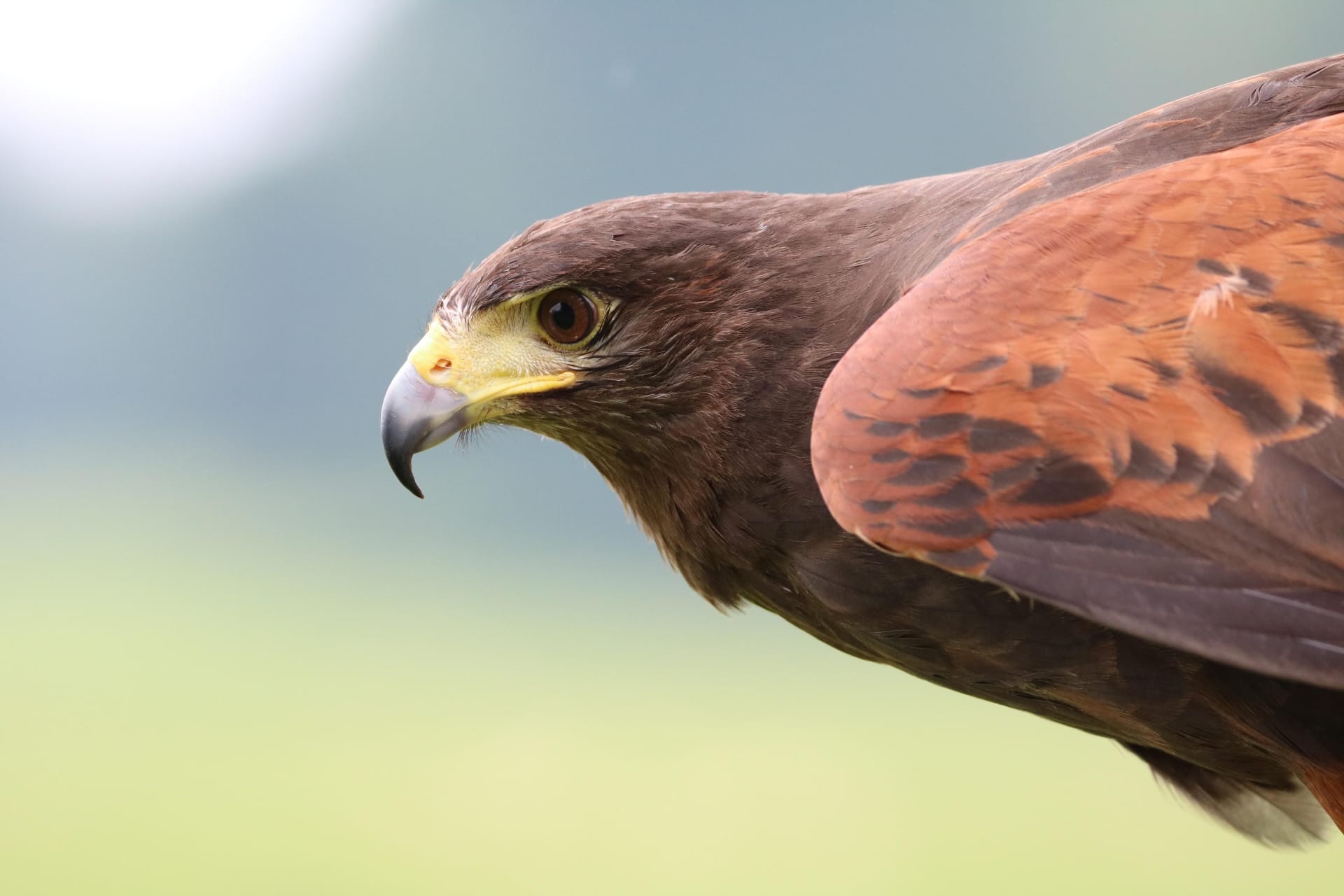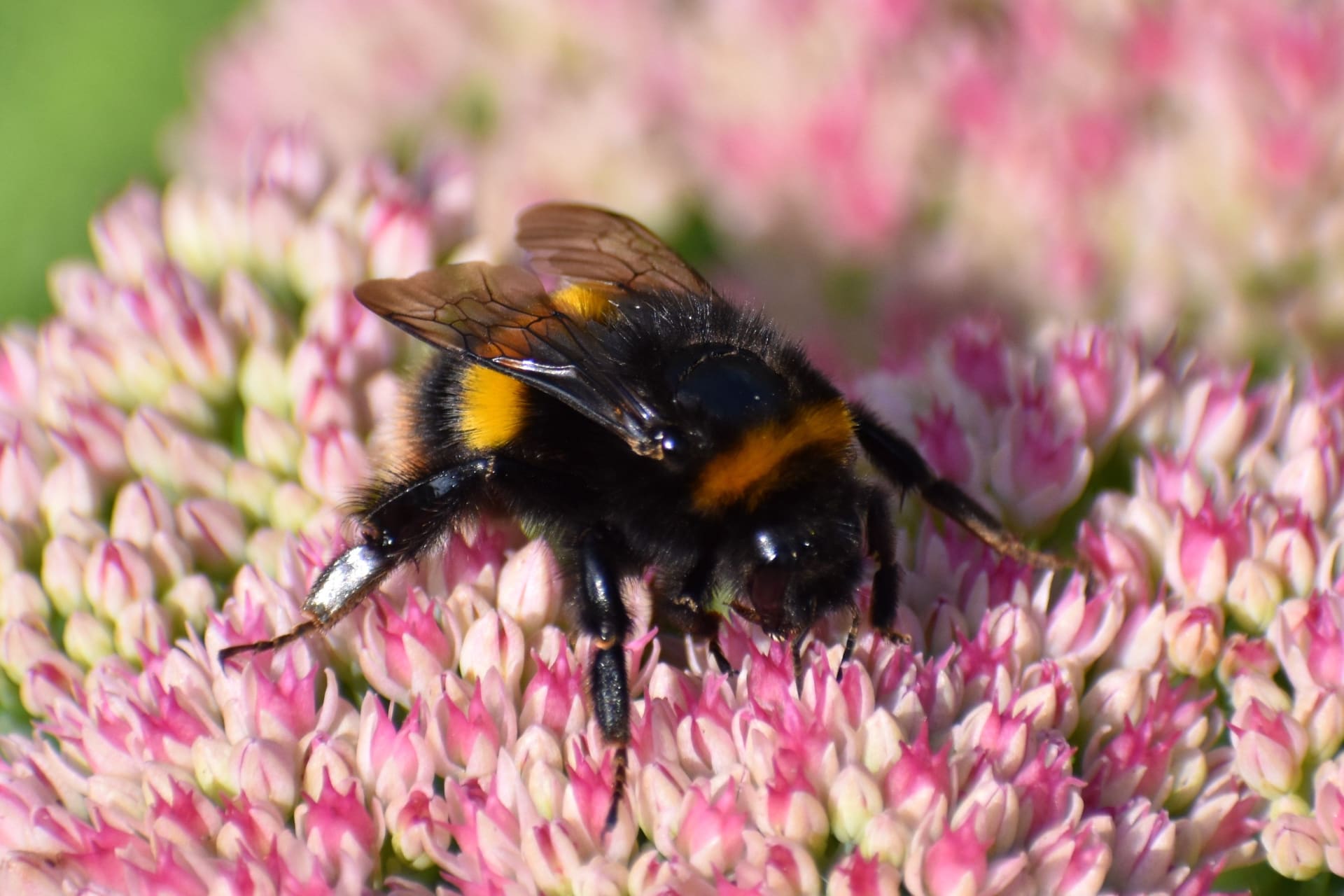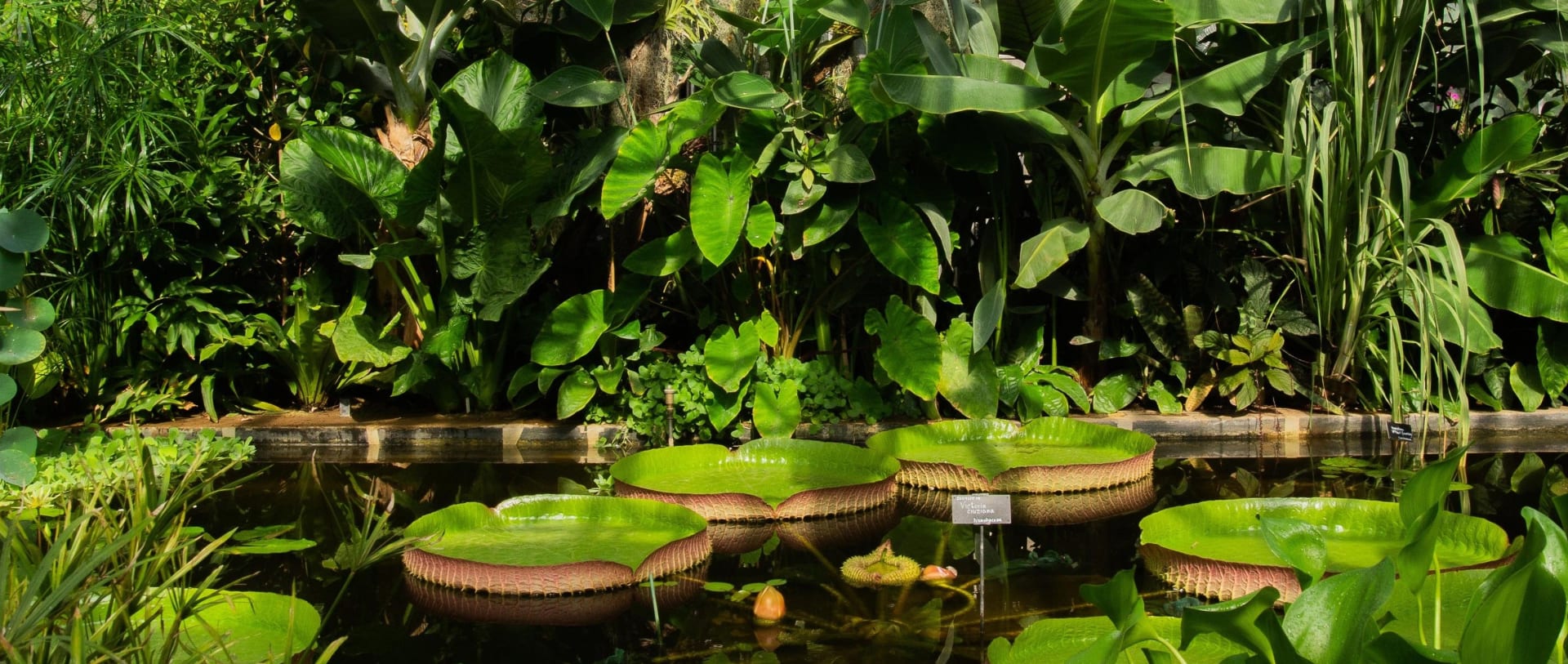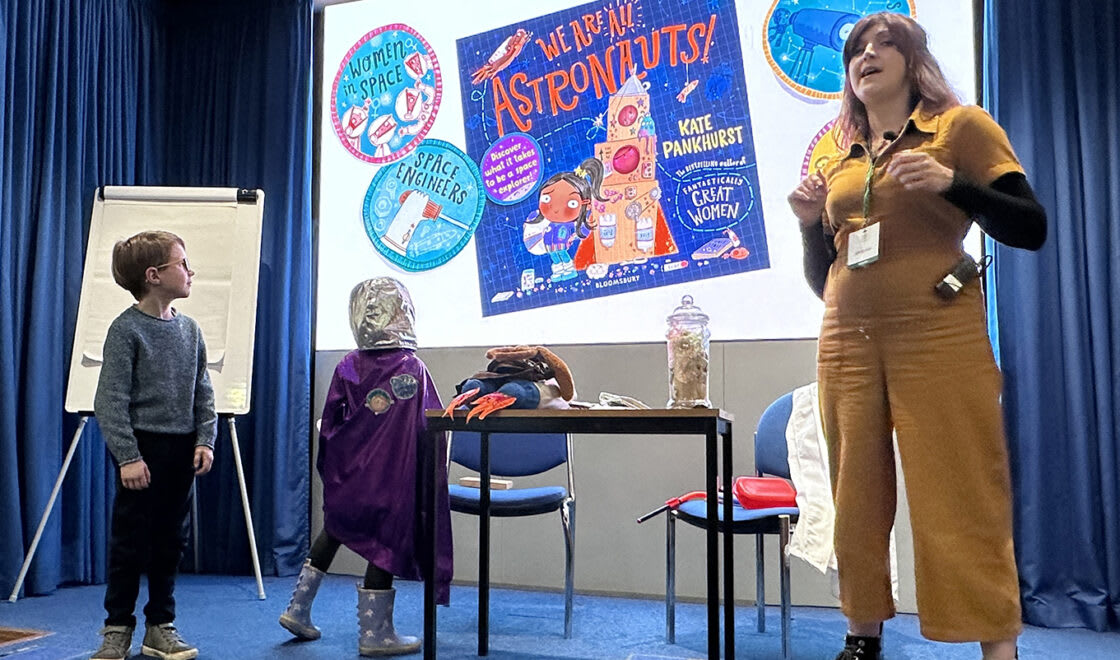If you’re an animal lover, don’t miss IF Oxford’s family-friendly Animal Senses Zone on Saturday 22 October at the John Krebs Field Station in Wytham, where the Oxford University Department of Biology does much of its research on animal behaviour. Situated next to Wytham Woods, it’s home to everything from reef fish to homing pigeons, and honeybees to Harris’ hawks.
“There’s a breeding colony of zebra finches, though they breed like rabbits!” smiles Professor Graham Taylor of the Oxford Flight Group, based at the Field Station. “We also have a flying team of five Harris’ hawks, named on a dragon-theme: Drogon and Rhaegal for Game of Thrones fans, Toothless from How to Train Your Dragon, Pokemon’s Charmander, and then Ruby who was named before the dragons got the upper hand. Visitors over the weekend will be able to see the hawks and a peregrine falcon, and meet the falconers who care for them, as well as the scientists who study them.”
Work on the birds and fish at the Field Station takes a non-invasive approach to observing their behaviour, measuring the activities of the animals in their natural environment or in a large, controlled space, such as the European Research Council-funded Wytham Flight Centre. Here Graham’s team studies visually-guided flight behaviour, analysing how birds use vision to steer themselves through cluttered environments, chase down their target, avoid moving objects and then land safely on a perch.
“Birds do all this amazingly fast, with an incredible fluid motion that looks almost effortless,” continues Graham, “so we want to understand how they can manage to avoid obstacles while concentrating on their prey. We put small motion-capture markers on the bird’s head, wings and body - similar to ones used in Hollywood to capture actors’ movements - and then with motion-capture cameras in the lab we measure how the bird moves during its flight, how they chase something, or deal with a gap that changes size as they approach. With the data we collect, we can use mathematical modelling to reconstruct in 3D how their position changed over time and analyse how the bird turned around and responded to obstacles. Because a bird’s head points where it is looking, we can also see what they were seeing at each moment, and using video gaming software we can reconstruct it from the bird’s perspective.”
During IF Oxford’s event, visitors to the Field Station will be able to use the motion capture system, to see their own movements in real-time on a big screen, watch video footage showing - literally - a birds eye view of the Harris’ hawks’ flights, and see drones flying using what the team has learnt through their work with birds.
The scientists aren’t only interested in how birds fly, but in understanding how this can be used to improve technology. “If we can emulate the way a bird flies, quickly, accurately and uninterruptedly, then this could allow us to use drones to safely chase down intruder drones over airports or stadiums,” continues Graham, “and we’re working with colleagues from the Computer Science Department to create bird-inspired algorithms for quadcoptors to allow them to navigate clutter”.
“By studying the way birds fly, and how they see the world, we’re also able to look with fresh eyes at our built environment so that we can prevent collisions by birds with glazed buildings, or structures like power lines and wind turbines, reducing casualties and minimising the impact of these things on bird populations in the future.
“We’re also interested in understanding how birds learn to fly, and the prolific zebra finches are great for this. Understanding how animals learn to perform complex motor tasks like perching will have broader applications in robotics and in developing artificial intelligence that learns through its own actions.”
Another strand of research at the centre with great potential for robotics is taking place at the Animal Vibration Lab where Dr Beth Mortimer is investigating animals that use the vibrations they feel through the surfaces they are standing on. “Vibration sensing is an enigmatic sense that’s rather like hearing through your feet, where the vibrations are reaching your feet through different materials rather than your ears through the air,” explains Beth. “It’s used by a variety of animals from spiders to elephants although we don’t (yet) have any elephants at Wytham! We, however, do fieldwork in Kenya with elephants who respond to seismic vibrations through the ground, and with fiddler crabs in Portugal who use vibrations to communicate in the dark. Here in Oxford we’re concentrating on spiders and bugs like plant-hoppers.”
“We have several spider populations at the field centre including the Brazilian black tarantula. They’re fairly long-lived and adult sized ones fit into your palm. I love them,” she smiles. “Honestly, they’re like kittens!”
“We also have golden orb spiders which are about an inch across yet build webs up to two metres in diameter out of incredible golden silk. I’m also researching the garden cross spider which you’ll see anywhere in Oxfordshire: they make those lovely geometric webs that you see sparkling in the winter frost.
“Webs are amazingly engineered rather like a musical instrument: there’s the material itself and the thickness and strength of the silk; there’s its geometric form and then the structural tension. These elements are all important for the transmission of information. Through its legs, a spider can sense the presence, location and type of prey in its web. The male spiders also use vibrations across the web to ‘serenade’ the females. Female spider are very aggressive animals, so the males need to tell the females without any ambiguity that they aren’t prey. To do this, they purposefully generate precise specific patterns of vibration.”
“At Wytham, we’re investigating how a spider uses the information it gathers on all eight legs, and how this varies across spider species. What’s really intriguing is the way a spider’s limbs move in response to vibrations where the processing is taking place in the periphery of their body rather than the central nervous system,” Beth continues.
“If we can understand how the spiders’ limbs detect and use vibrations without requiring ‘brain power’ if you like, then we can apply this same approach to robots outsourcing some of their processing away from the central computer. If we can design robots’ morphology to react like spiders do, with a kind of passive filtering of information at the extremities, which organic systems do very well, then that reduces the processing, memory and power needed in the robot’s core.”
“Another of our research groups works with bees,” adds Graham, “which have small brains and yet exhibit some amazing behaviours, dancing to communicate and using an internal navigation system that uses very little computing power and gets by just fine without a GPS. They’re also some of the most valuable pollinators of wild flowers and commercially important crops, so it’s exciting and important to unravel how they do it.”
Over the weekend, visitors will also have the opportunity to see the bees, their hives and chat to the beekeepers.
Animal Senses Zone, Saturday 22 October, 10am – 4pm, John Krebs Field Station









